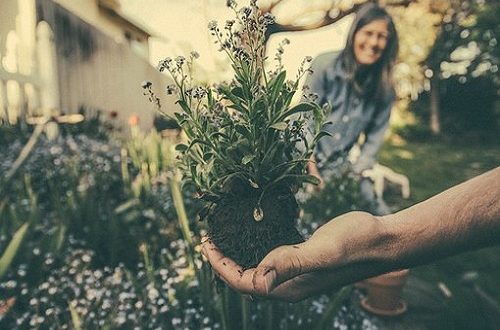House and garden plants are a wonderful way to introduce colour and bring natural elements into your space, not to mention their host of health benefits, including improved air quality and stress reduction.
If you’re a pet owner, it’s important to do your research before adding new houseplants to your home décor’s repertoire. Many houseplants contain calcium oxalate crystals, a compound that can cause swelling, vomiting and severe throat pain if ingested by your pet.
Finding appropriate plants that are kind to your pets can be a minefield. Here, the garden experts behind Hayter discusses some great plants that can feel happily at home both in the garden and the house – perfect for temperamental weather conditions and safe for your furry friends.
Moth orchid
The moth orchid (also known as the Phalaenopsis orchid) is currently trending in the houseplant market thanks to its colour variety, hardiness and availability at most flower shops and supermarkets. It’s beginner-friendly for all you plant novices out there, with good survivability in drought and medium-light needs (place it in a bright space that’s indirect to the sun).
Its high survivability mixed with a preference for medium-light, low nutrient levels and warm conditions makes it an ideal houseplant that can be originally grown in the garden. Moth orchids prefer shade and a minimum temperature of 20°C to grow happily.
Tip: Orchids can also be watered using ice cubes, which is handy if you have a habit of over-watering.
Goldtraube
Goldtraube, or Vaccinium corymbosum, is known to most as a blueberry bush. This pretty little shrub loves being in both the garden and on a windowsill in equal measure.
A Goldtraube makes a nice addition to garden shrubbery or a kitchen windowsill for easy access to its fruit. This plant can tolerate shade, but it definitely prefers sunlight and moist soil. Be sure to keep it out of direct winds to preserve its strength.
Blueberries are also pet-safe, so there’s no need to chase your furry friends around the house if they pinch one. Blueberries are a source of healthy minerals and antioxidants for both humans and pets!
Tip: Expect more blueberries if the plant gets more sunlight.
Air plants
Air plants are a fascinating alternative to your more traditional garden or houseplant. The most low-maintenance plant on this list, air plants don’t require soil to grow. They can grow in rooms, on garden furniture, trees and rocks, and in areas with high humidity where other plants may struggle (like the bathroom). Rather than traditional watering, they require misting to keep them healthy.
What makes air plants the ultimate garden and home-friendly houseplant alternative is the ability to present them in many creative ways that keep them out of reach.
A clever way of displaying air plants is using glass terrariums that can be placed in areas away from roaming pets – this is helpful if your four-legged friends have a habit of knocking over your décor. You can keep air plants on areas such as desks and cabinets or use them as decoration for garden furniture.
Tip: Some great air plants for beginners are the Tillandsia caput-medusae and Tillandsia aeranthos.
Kentia palm
An imposing plant that’s best suited to large rooms and garden backlines, the Kentia palm is a tall plant with sweeping foliage and vibrant green colour.
It’s nicknamed the ‘paradise palm plant’ for good reason – it’s reminiscent of tall tropical palm trees and has excellent capability for air purification.
These plants grow quickly and are easy to care for, adapting to a range of soil mixes and requiring weekly watering. While this plant is appropriate for indoor use, we’d recommend placing it in rooms with lots of space due to its large size. The Kentia palm can be left outside in all non-extreme conditions.
Tip: A matching set of Kentia palms beside the front door or garden steps makes for a beautiful entrance to a home or garden.
Zebra cactus
The zebra cactus, also known as the haworthia, deserves a unique spot on this list as it’s one of the few non-toxic succulents that fit well with the indoor aesthetics of most modern homes as well as the garden.
This succulent isn’t a true member of the cactus family. Instead of spikes, it has a striking collection of small aloe plants with white chevroned leaves.
Perfect for potting, this plant is extremely low-maintenance – water when the topsoil is part-dry and allow for partial sunlight and warm temperatures.
Tip: if you find your zebra cactus’ leaves turning yellow, move it to a shadier spot. The zebra cactus must be moved indoors on especially cold nights or non-summer months.
There we have it! Now you and your pets can enjoy your plants both inside the house and in your garden without the need for concern. Play around with your greenery and find a location that best suits your living space, making sure to position your plants where both you and your pet can benefit from some mood-boosting nature.
As always, if you’re unsure as to whether a houseplant is dangerous to pets, be careful to check before purchase.
 Gardeners Club The Gardeners Club is a free to join online club for everyone with an interest in gardening and gardens.
Gardeners Club The Gardeners Club is a free to join online club for everyone with an interest in gardening and gardens.






